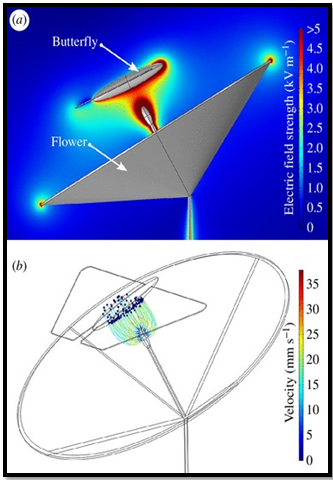BUTTERFLIES USE STATIC ELECTRICITY FOR POLLINATION
Why in the News?
- Butterflies and moths collect significant static electricity during flight, allowing them to attract pollen grains from flowers across air gaps of several millimeters or centimeters.
- A study published in the Journal of the Royal Society Interface reveals this discovery, highlighting the enhanced efficiency and effectiveness of these insects as pollinators.
Research Insights
- Static electricity levels vary among butterfly and moth species, linked to ecological factors like flower visitation, tropical habitats, and activity times.
- This study is the first to suggest that static electricity accumulation in animals is an adaptive trait influenced by natural selection.
Testing Process
- Researchers examined 269 butterflies and moths from 11 species across five continents, finding all individuals carried a net electrostatic charge, a universal trait among Lepidoptera.
- Despite a lower wingbeat frequency, butterflies and moths still accumulate enough electrostatic charge to enable contactless pollination, boosting their effectiveness as pollinators.
Source: BS
| Important Butterflies( UPSC prespective)
Candidates for National Butterfly:
State Butterflies in India:
|




